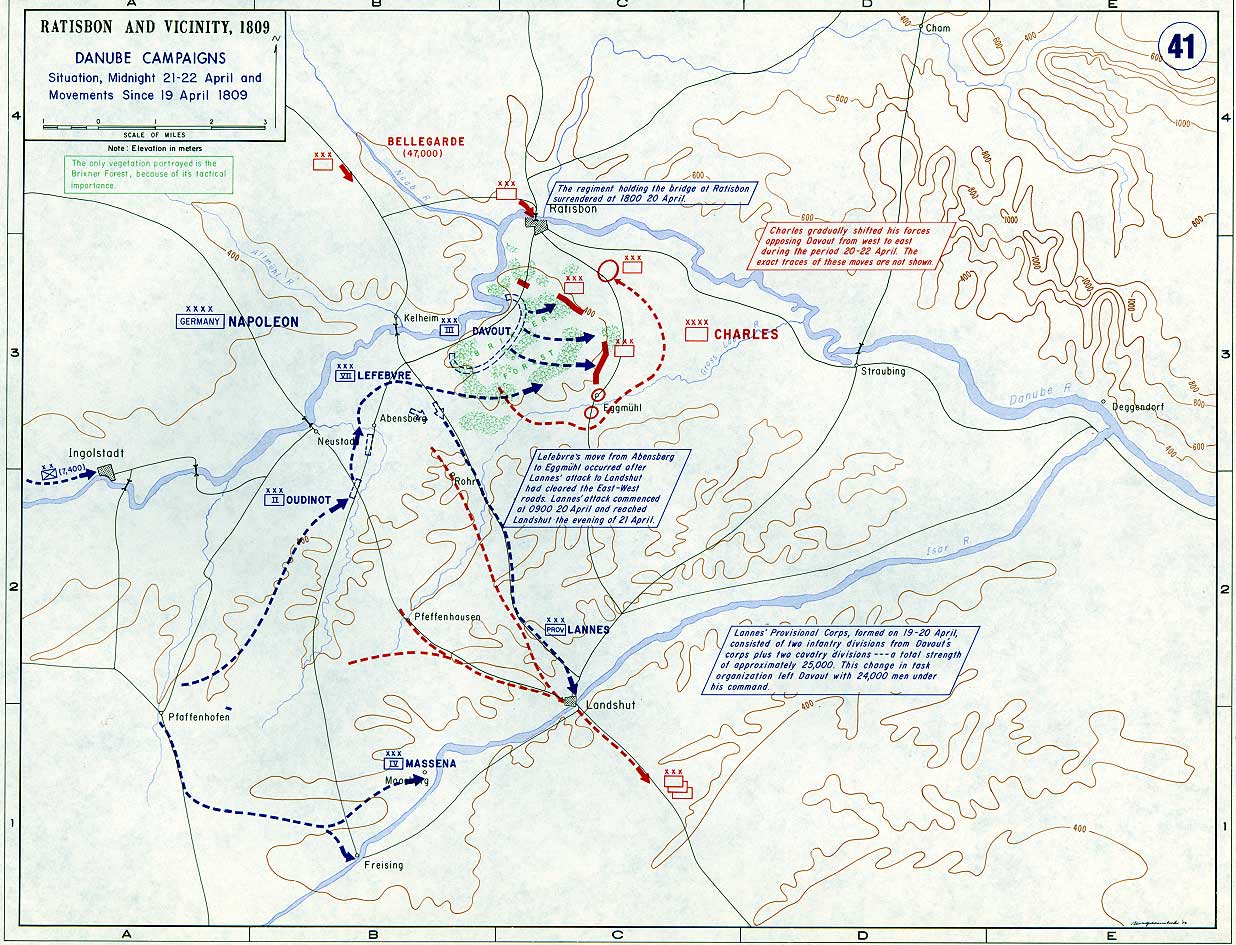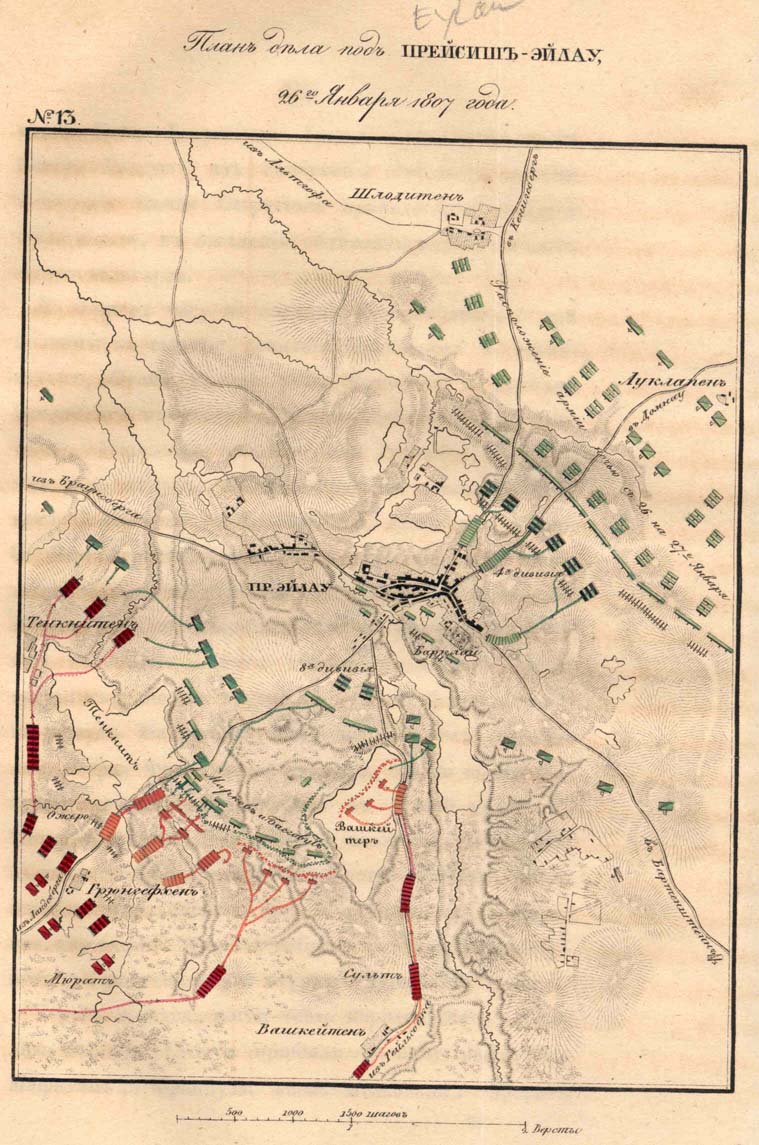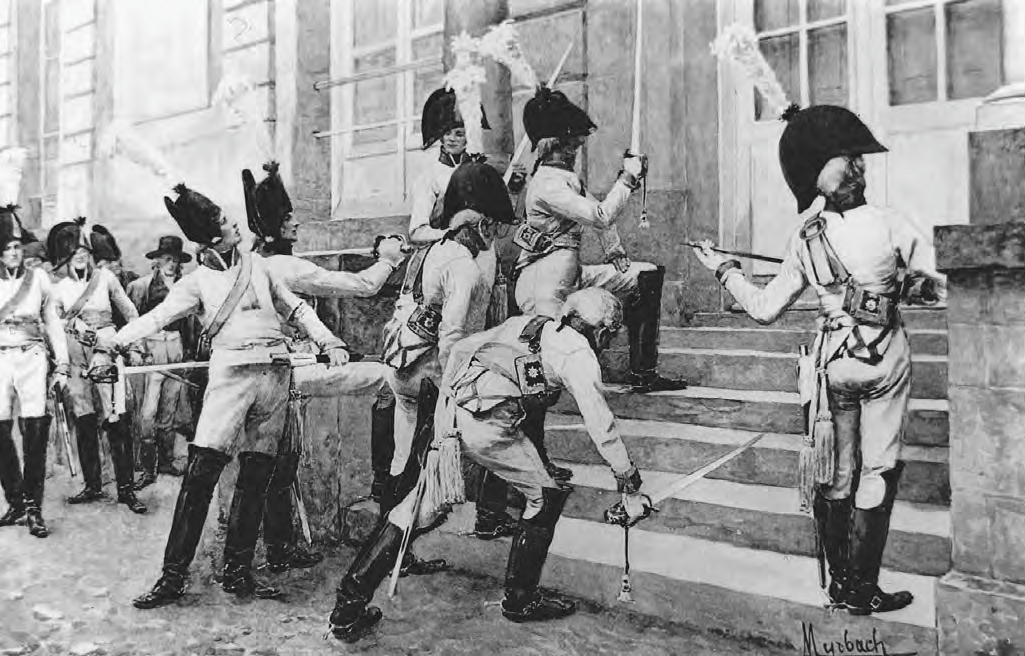|
Jean-Baptiste Bessières
Jean-Baptiste Bessières, duc d'Istrie (; 6 August 1768 – 1 May 1813) was a French military leader of the French Revolutionary Wars and the Napoleonic Wars. He was made a Marshal of the Empire by Emperor Napoleon in 1804. Born into the ''petite bourgeoisie'', Bessières began his military career during the French Revolution and was promoted to captain in the 22nd Chasseur à cheval Regiment. He was noticed during the Italian campaign of 1796–1797 by General Napoleon Bonaparte, who appointed him commander of the corps of mounted guides. In this capacity, Bessières participated in the Egyptian campaign until 1799, before being made a general under the Consulate for his distinguished service at the Battle of Marengo. He was elevated to the dignity of Marshal of the Empire in 1804 and took command of the cavalry of the Imperial Guard. A brilliant cavalry officer, Bessières distinguished himself in most of the major battles of the Napoleonic Wars, notably at Austerlitz, ... [...More Info...] [...Related Items...] OR: [Wikipedia] [Google] [Baidu] |
Henri-François Riesener
Henri-François Riesener (19 October 1767, in Paris – 7 February 1828, in Paris) was a French portrait painter and miniaturist. He was the son of German-born cabinet-maker Jean-Henri Riesener (1743–1806) and the father of the Romantic painter Léon Riesener (1808–1878). Life First studying under François-André Vincent then Jacques-Louis David, he finally left David's studio to join the army at the outbreak of the French Revolutionary Wars, fighting in Italy and Egypt. On his return to France, Riesener began working as a portraitist and miniaturist. His works were featured at the Paris Salon, where he exhibited portraits of Eugène de Beauharnais, général de brigade Michel Ordener, Madame Sallandrouze, the comte de Cessac and Charles Maurice de Talleyrand-Périgord, among others. Riesener also painted the singers of the Opéra-Comique, and produced a portrait of his cousin André-Antoine Ravrio, a famous sculptor in bronze at Napoleon's court, which is now on ... [...More Info...] [...Related Items...] OR: [Wikipedia] [Google] [Baidu] |
Siege Of Acre (1799)
The siege of Acre of 1799 was an unsuccessful French siege of the Ottoman city of Acre (now Akko in modern Israel) and was the turning point of Napoleon's invasion of Egypt and Syria, along with the Battle of the Nile. It was Napoleon's third tactical defeat in his career, being defeated at the Second Battle of Bassano and the Battle of Caldiero three years previously during the Italian campaign, and his first major strategic defeat, along with the last time he was defeated in battle for 10 years. As a result of the failed siege, Napoleon retreated two months later and withdrew to Egypt. Background Acre was a site of significant strategic importance due to its commanding position on the route between Egypt and Syria. Bonaparte wanted to capture it following his invasion of Egypt. He hoped to incite a Syrian rebellion against the Ottomans and threaten British India. After the siege of Jaffa, which was followed by two days and nights of massacre and rape by the French fo ... [...More Info...] [...Related Items...] OR: [Wikipedia] [Google] [Baidu] |
Walcheren Campaign
The Walcheren Campaign () was an unsuccessful United Kingdom of Great Britain and Ireland, British expedition to the Kingdom of Holland in 1809 intended to open another front in the Austrian Empire's struggle with First French Empire, France during the War of the Fifth Coalition. John Pitt, 2nd Earl of Chatham, the commander of the expedition, was ordered to capture the towns of Flushing, Netherlands, Flushing and Antwerp and thus enable British ships to safely traverse the Scheldt River. A British expeditionary force of 39,000 troops, together with field artillery and two siege trains, crossed the North Sea and landed at Walcheren on 30July. This was the largest British expedition of that year, larger than the army serving in the Peninsular War in the Iberian Peninsula. Nevertheless, it failed to achieve any of its goals. The campaign involved little fighting, but heavy losses from the sickness popularly dubbed Walcheren fever#Napoleonic Wars, "Walcheren Fever". Although more ... [...More Info...] [...Related Items...] OR: [Wikipedia] [Google] [Baidu] |
Battle Of Wagram
The Battle of Wagram (; 5–6 July 1809) was a military engagement of the Napoleonic Wars that ended in a costly but decisive victory for Emperor of the French, Emperor Napoleon's French and allied army against the Austrian Empire, Austrian army under the command of Archduke Charles, Duke of Teschen, Archduke Charles of Austria-Teschen. The battle led to the breakup of the Fifth Coalition, the Austrian and British-led alliance against France. Wagram was the largest battle in European history up to its time. In 1809, the French military presence in the Confederation of the Rhine was diminished as Napoleon transferred a number of soldiers to fight in the Peninsular War. As a result, the Austrian Empire saw its chance to recover some of its former sphere of influence and invaded the Kingdom of Bavaria, a French ally. Recovering from his initial surprise, Napoleon beat the Austrian forces and occupied Vienna at the beginning of May 1809. Despite the string of sharp defeats and the l ... [...More Info...] [...Related Items...] OR: [Wikipedia] [Google] [Baidu] |
Battle Of Aspern-Essling
In the Battle of Aspern-Essling (21–22 May 1809), Napoleon crossed the Danube near Vienna, but the French and their allies were attacked and forced back across the river by the Austrians under Archduke Charles. It was the first time Napoleon had been personally defeated in a major battle, as well as his first battle defeat in 10 years since the Siege of Acre, and his first battle defeat as head of state, although he did suffer a tactical defeat in the Battle of Caldiero (1796). Archduke Charles drove out the French but fell short of destroying their army. The French lost over 20,000 men including one of Napoleon's ablest field commanders and closest friends, Marshal Jean Lannes. Background On 10 April 1809, Austrian troops under Archduke Charles had crossed the border into Bavaria, a French client state; thus beginning hostilities without a declaration of war. The French, initially taken by surprise, were able to defeat the Austrians at Eckmühl, Abensberg and Ratisbon. ... [...More Info...] [...Related Items...] OR: [Wikipedia] [Google] [Baidu] |
War Of The Fifth Coalition
The War of the Fifth Coalition was a European conflict in 1809 that was part of the Napoleonic Wars and the Coalition Wars. The main conflict took place in Central Europe between the Austrian Empire of Francis I and Napoleon's French Empire. The French were supported by their client states—the Kingdom of Italy, the Confederation of the Rhine and the Duchy of Warsaw. Austria was supported by the Fifth Coalition which included the United Kingdom, Portugal, Spain, and the Kingdoms of Sardinia and Sicily, although the latter two took no part in the fighting. By the start of 1809 much of the French army was committed to the Peninsular War against Britain, Spain and Portugal. After France withdrew 108,000 soldiers from Germany, Austria attacked France to seek the recovery of territories lost in the 1803–1806 War of the Third Coalition. The Austrians hoped Prussia would support them, having recently been defeated by France, but Prussia chose to remain neutral. On 10 April 18 ... [...More Info...] [...Related Items...] OR: [Wikipedia] [Google] [Baidu] |
Battle Of Medina De Rioseco
The Battle of Medina de Rioseco, also known as the Battle of Moclín, was fought during the Peninsular War on 14 July 1808 when a combined body of Spanish militia and regulars moved to rupture the French line of communications to Madrid. General Joaquín Blake's Army of Galicia, under joint command with General Gregorio de la Cuesta, was routed by Marshal Bessières after a badly coordinated but stubborn fight against the French corps north of Valladolid. Bessières exploited the poor coordination between Blake and Cuesta to defeat the Spaniards in detail, with Blake being ejected from a low ridge while Cuesta sat to the rear, and Cuesta failing to recapture the ridge with his own troops. The Army of Galicia was the only formation capable of threatening the French advance into Old Castile—Cuesta's command having been destroyed earlier at Cabezón—and its destruction marked a serious blow to Spain's national uprising. But in the event, Medina de Rioseco prov ... [...More Info...] [...Related Items...] OR: [Wikipedia] [Google] [Baidu] |
Peninsular War
The Peninsular War (1808–1814) was fought in the Iberian Peninsula by Kingdom of Portugal, Portugal, Spain and the United Kingdom of Great Britain and Ireland, United Kingdom against the invading and occupying forces of the First French Empire during the Napoleonic Wars. In Spain, it is considered to overlap with the Spanish War of Independence. The war can be said to have started when the First French Empire, French and History of Spain (1808–1874), Spanish armies Invasion of Portugal (1807), invaded and occupied Portugal in 1807 by transiting through Kingdom of Spain (1810-1873), Spain, but it escalated in 1808 after First French Empire, Napoleonic France occupied History of Spain (1808–1874), Spain, which had been its ally. Napoleon Bonaparte Abdications of Bayonne, forced the abdications of Ferdinand VII of Spain, Ferdinand VII and his father Charles IV of Spain, Charles IV and then installed his brother Joseph Bonaparte on the Spanish throne and promulgated the ... [...More Info...] [...Related Items...] OR: [Wikipedia] [Google] [Baidu] |
Battle Of Friedland
The Battle of Friedland (14 June 1807) was a major engagement of the Napoleonic Wars between the armies of the French Empire commanded by Napoleon I and the armies of the Russian Empire led by General Levin August von Bennigsen. Napoleon and the French obtained a decisive victory that routed much of the Russian army, which retreated chaotically over the Alle river by the end of the fighting. The battlefield is located in modern-day Kaliningrad Oblast, near the town of Pravdinsk, Russia. The engagement at Friedland was a strategic necessity after the Battle of Eylau earlier in 1807 had failed to yield a decisive verdict for either side. The battle began when Bennigsen noticed the seemingly isolated reserve corps of Marshal Lannes at the town of Friedland. Bennigsen, who planned only to secure his march northward to Wehlau and never intended to risk an engagement against Napoleon's numerically-superior forces, thought he had a good chance of destroying these isolated Frenc ... [...More Info...] [...Related Items...] OR: [Wikipedia] [Google] [Baidu] |
Battle Of Eylau
The Battle of Eylau (also known as the Battle of Preussisch-Eylau) was a bloody and strategically inconclusive battle on 7 and 8 February 1807 between Napoleon's and the Imperial Russian Army under the command of General Levin August von Bennigsen near the town of Bagrationovsk, Preussisch Eylau in East Prussia. Late in the battle, the Russians received timely reinforcements from a Kingdom of Prussia, Prussian division of Anton Wilhelm von L'Estocq, von L'Estocq. After 1945, the town was renamed Bagrationovsk as part of Kaliningrad Oblast, Russia. The engagement was fought during the War of the Fourth Coalition, part of the Napoleonic Wars. Napoleon's armies had smashed the army of the Austrian Empire in the Ulm Campaign and the combined Austrian and Russian armies at the Battle of Austerlitz on 2 December 1805. On 14 October 1806, Napoleon crushed the armies of the Kingdom of Prussia at the Battle of Jena–Auerstedt and hunted down the scattered Prussians at Battle of Pren ... [...More Info...] [...Related Items...] OR: [Wikipedia] [Google] [Baidu] |
War Of The Fourth Coalition
The War of the Fourth Coalition () was a war spanning 1806–1807 that saw a multinational coalition fight against Napoleon's First French Empire, French Empire, subsequently being defeated. The main coalition partners were Kingdom of Prussia, Prussia and Russian Empire, Russia with Electorate of Saxony, Saxony, Franco-Swedish War, Sweden, and United Kingdom of Great Britain and Ireland, Great Britain also contributing. Excluding Prussia, some members of the coalition had previously been fighting France as part of the War of the Third Coalition, Third Coalition, and there was no intervening period of general peace. On 9 October 1806, Prussia declared war on France and joined a renewed coalition, fearing the rise in French power after the defeat of Austrian Empire, Austria and establishment of the French-sponsored Confederation of the Rhine in addition to having learned of French plans to cede Prussian-desired Electorate of Hanover, Hanover to Britain in exchange for peace. Prussi ... [...More Info...] [...Related Items...] OR: [Wikipedia] [Google] [Baidu] |
Battle Of Austerlitz
The Battle of Austerlitz (2 December 1805/11 Frimaire An XIV French Republican calendar, FRC), also known as the Battle of the Three Emperors, was one of the most important military engagements of the Napoleonic Wars. The battle occurred near the town of Slavkov u Brna, Austerlitz in the Austrian Empire (now Slavkov u Brna in the Czech Republic). Around 158,000 troops were involved, of which around 24,000 were killed or wounded. The battle is often cited by military historians as one of Napoleon's tactical masterpieces, in the same league as other historic engagements like Hannibal's Battle of Cannae, Cannae (216 BC) or Alexander the Great's Battle of Gaugamela, Gaugamela (331 BC).Byron Farwell, Farwell p. 64. "Austerlitz is generally regarded as one of Napoleon's tactical masterpieces and has been ranked as the equal of Arbela, Cannae, and Leuthen."Trevor N. Dupuy, Dupuy p. 102 Note: Dupuy was not afraid of expressing an opinion, and he classified some of his subjects as Great ... [...More Info...] [...Related Items...] OR: [Wikipedia] [Google] [Baidu] |









